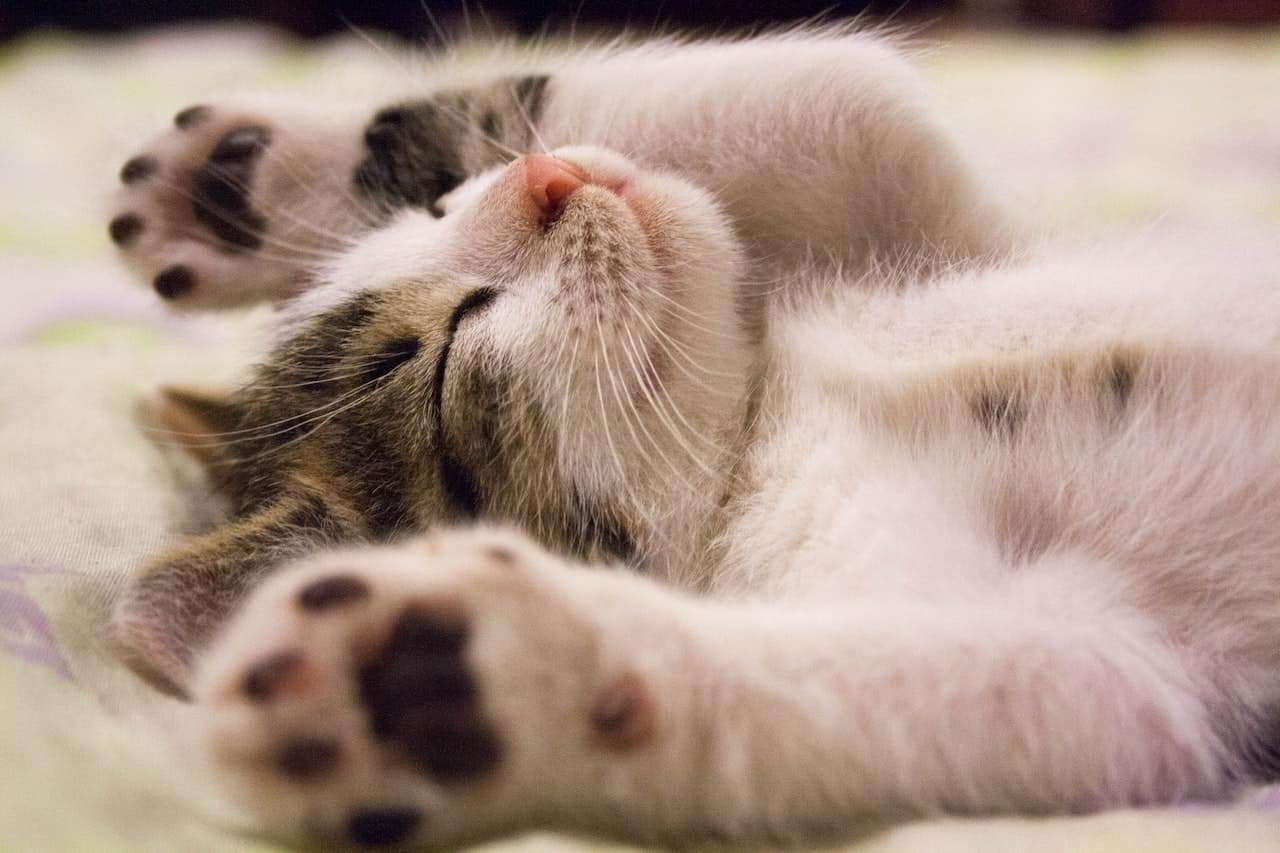If you own a cat, you may have considered declawing your furry friend for a variety of reasons. Perhaps you’re concerned about furniture damage or want to safeguard your kids from scratches.
However, before making this decision, it is critical to understand what to expect after a cat has been declawed. While the procedure is simple and common, you should be aware of the potential risks and long-term consequences for your feline companion.
Declawing a cat involves surgically removing the claws and associated bones. This is a major surgery that is typically performed under general anesthesia.
While the cat may be in pain and discomfort for a few days following the procedure, it should be fine within a week or two. However, declawing can have long-term consequences for your cat’s physical and mental health.
Some cats may develop behavioral issues or suffer from chronic pain, lowering their quality of life. It’s also worth noting that declawing is illegal or banned in many countries due to concerns about animal welfare.
Many animal rights organizations, such as the American Society for the Prevention of Cruelty to Animals (ASPCA), oppose declawing and recommend that cat owners consider alternative solutions, such as providing scratching posts and regular nail trimming.
It’s crucial to discuss all available options with your veterinarian before making a decision. In this blog, we’ll explore what to expect after declawing a cat, including the short-term and long-term effects of the procedure, potential complications, and alternative solutions to consider.
By understanding the risks and benefits of declawing, you can make an informed decision that promotes the health and well-being of your furry companion.
But before we get into things to expect and the potential risk involved in declawing cats, we should be aware of the various reasons why cats are declawed in the first place
Why Do Cats Get Declawed
There are a few common reasons why cat owners choose to declaw their furry friends. One of the most significant reasons is to prevent cats from damaging furniture, carpets, and other household items.
Cats love to scratch and sharpen their claws, and this behavior can result in unwanted damage to your home. Declawing can eliminate this problem and protect your belongings from potential harm.
Another reason why cats get declawed is to protect children or elderly family members from scratches. While cats are usually playful and friendly, they can occasionally scratch or bite if they feel threatened or agitated.
Declawing can reduce the risk of injury and make your home a safer environment for everyone. Some cat owners may also choose to declaw their cats because of apartment or rental regulations.
Some landlords or property managers may require cats to be declawed to reduce damage to the property or avoid complaints from other tenants.
Another unique reason why cat owners may choose to declaw their cats is for medical reasons. If a cat has a tumor or a severely infected claw that cannot be treated with medication, declawing may be necessary to prevent the condition from worsening.
In these cases, declawing is seen as a last resort to help alleviate the cat’s suffering. Another reason for declawing a cat is outdoor safety concerns.
For cats that are allowed to roam outdoors, there may be safety concerns that make declawing seem like the best option. Cats with claws may be more likely to get stuck in fences, attacked by other animals, or hit by cars.
While declawing may seem like a solution, it’s important to note that it does not guarantee a cat’s safety outside and may actually put them at greater risk if they cannot defend themselves.
Personal preference is also a good reason why some cat owners choose to declaw their pets. Some owners may simply prefer the appearance of declawed cats or find it easier to care for them.
However, it’s important to consider the potential harm caused by declawing and explore alternative solutions before making a decision.
Also, aggressive behavior may be another reason for declawing a cat. In rare cases, a cat may exhibit extremely aggressive behavior that cannot be managed through training or medication.
In these situations, declawing may be considered a last resort to protect the cat’s owner and other pets in the household. However, it’s essential to work closely with a veterinarian or animal behaviorist to explore all options before resorting to declawing.
Things To Expect After declawing A Cat
While declawing a cat may appear to solve certain issues, it also presents its own set of risks and potential complications. Here are some of them:
Pain (Obviously)
Declawing a cat is a surgical procedure that involves the amputation of the cat’s toes at the first joint, which includes the removal of the claw and surrounding tissue.
This is an extremely painful and traumatic experience for the cat, and pain is one of the primary things to expect after the procedure. The pain associated with declawing is typically severe and can last for several days or even weeks.
The cat may show signs of discomfort such as limping, reluctance to move or use the litter box, and crying out in pain. In some cases, the cat may even develop secondary infections or other complications that can further exacerbate the pain.
Reduced Mobility
Declawing a cat entails removing the claws from the cat’s toes, which can reduce the cat’s mobility significantly. This is because claws are an important part of a cat’s anatomy, serving as a tool for balance, climbing, and self-defense.
Cats may have difficulty walking, climbing, and jumping after declawing. The pain from the surgery may also cause the cat to be less active, contributing to decreased mobility.
Cats may develop chronic pain and mobility issues that can last the rest of their lives in some cases. Reduced mobility can have a significant impact on a cat’s overall quality of life.
Cats rely on their claws to engage in natural behaviors such as scratching, stretching, and climbing. When they are unable to perform these activities, they may become frustrated, stressed, and even depressed.
Behavioral Change
Declawing a cat can have a significant impact on the cat’s behavior which can be due to a number of factors, including pain, anxiety, and frustration.
One of the most common things to expect after declawing is a change in the cat’s behavior, which can manifest in a number of ways.
After declawing, some cats may become more withdrawn and less active. This can be due to the pain and discomfort associated with the surgery, as well as the cat’s reduced mobility.
Cats may also become more anxious and nervous, as they are no longer able to defend themselves or engage in natural behaviors such as scratching and climbing.
In some cases, cats may develop new or undesirable behaviors after declawing. For example, they may start urinating outside of the litter box or become more aggressive towards people or other animals.
Emotional Impact
Declawing a cat can have a significant emotional impact on both the cat and its owner. This is because declawing is a painful and traumatic experience that can result in long-term negative consequences for the cat’s physical and mental well-being.
After declawing, cats may experience increased fear, anxiety, and stress. This is because they are no longer able to engage in natural behaviors such as scratching, climbing, and defending themselves.
These behaviors are important for a cat’s mental and emotional health, and when they are unable to perform them, it can cause significant distress.
In addition to the emotional impact on the cat, declawing can also have a significant emotional impact on the cat’s owner. Many owners who declaw their cats do so in an attempt to prevent damage to furniture and other household items.
However, they may not realize the full extent of the negative consequences of the procedure. Once the cat is declawed, the owner may feel guilty or regretful for putting their cat through such a painful experience.
Further Complications
Infection is one of the most frequent side effects of declawing. There is a chance of infection at the surgical site because the operation includes cutting into the cat’s skin and removing a part of the toe.
Due to a weaker immune system during the healing process, cats may also be more prone to other illnesses. The emergence of persistent pain is another potential side effect of declawing.
When a cat’s claws are removed, the nerves and tissues in the toe may be permanently harmed, resulting in chronic pain that may be challenging to manage. The cat’s gait and general mobility may also change as a result of this.
Long-Term Health Risk
Declawing entails amputating the first joint of the cat’s toes. There are a number of long-term health hazards to take into account in addition to the surgery’s potential acute dangers and problems.
Declawing carries several serious long-term health hazards, one of which is the possibility of chronic pain and discomfort brought on by irreparable nerve injury. This may necessitate continual pain care and have a substantial influence on the cat’s quality of life.
Declawing can also result in long-term difficulties like arthritis, lameness, and joint disorders. A cat’s ability to walk, run, and jump may change if its claws are removed because they play a significant role in its anatomy.
This may put the joints under greater strain, causing inflammation and other sorts of long-term harm. Declawing can be harmful to a cat’s mental and emotional health in addition to its physical health.
For the cat, the process can be upsetting and stressful, which can result in anxiety, depression, and other behavioral problems. Declawed cats may be more prone to aggressive behavior, litter box issues, and other undesirable traits.
Limping Or Lopsided Gait
Limping or a lopsided gait is a common problem in cats who have been declawed. This is because the procedure involves surgical removal of the cat’s toes which can result in significant changes in its anatomy and movement.
Declawing can cause a change in the cat’s gait because the claw and the bone and tissue that support it are removed. This can cause the cat to walk abnormally, such as limping or with a lopsided gait.
This change in gait may increase the cat’s risk of developing other joint-related issues, such as arthritis, as well as cause chronic pain.
Declawed cats may struggle to jump or climb, which can further limit their mobility and lower their quality of life overall. They could feel nervous or vulnerable since they lack claws, which can result in various behavioral problems.
Alternative To Declawing A Cat
There are several alternatives to declawing a cat that can help prevent unwanted scratching behavior without resorting to a surgical procedure. These alternatives can be both effective and humane and are often recommended by animal welfare organizations and veterinarians.
Regular Nail Trimming
One of the simplest alternatives to declawing is regular nail trimming. Keeping a cat’s nails trimmed can prevent them from becoming too sharp and can reduce the damage they cause when the cat scratches.
This can be done at home using a pair of specialized cat nail clippers, or by a veterinarian or professional groomer.
Providing Appropriate Scratching Surface
Providing cats with appropriate scratching surfaces is another effective alternative to declawing. Cats need to scratch to maintain healthy nails and to mark their territory, so it’s important to provide them with suitable surfaces for this behavior.
Scratching posts, mats, and boards can all be effective options and should be placed in locations where the cat spends time and is likely to scratch.
Environmental Enrichment
Environmental enrichment is another effective way to prevent unwanted scratching behavior. Providing cats with toys, interactive puzzles, and other forms of stimulation can help keep them mentally and physically engaged, reducing the likelihood that they will engage in destructive behavior such as scratching.
Behavioral Training
Behavioral training can also be an effective alternative to declawing. Teaching cats to use scratching posts and other appropriate surfaces for their scratching behavior can help redirect their natural tendencies and prevent damage to furniture and other household items.
Nail Capping
There are several products available that can help prevent unwanted scratching behavior. Nail caps can be applied to a cat’s claws to prevent damage, while pheromone sprays and diffusers can be used to help reduce anxiety and stress, which can be trigger for destructive scratching behavior.
Read More
Redirect Cat scratching Behavior



